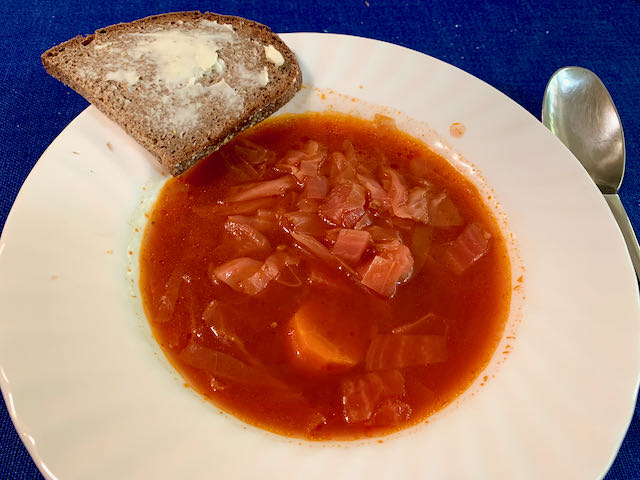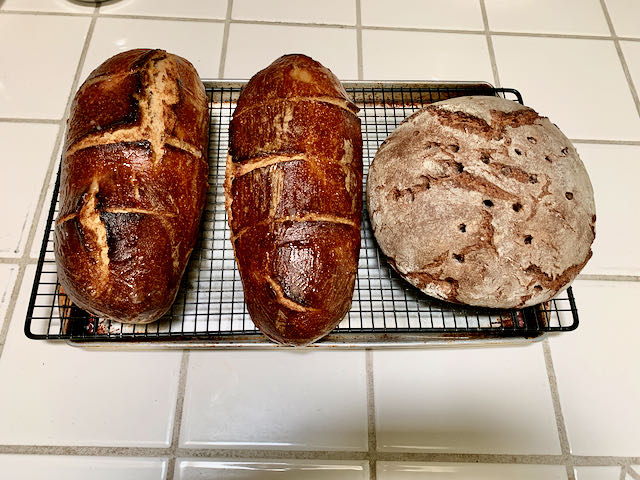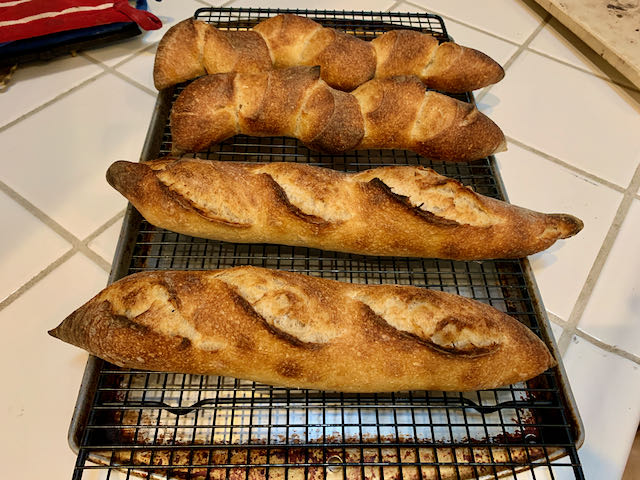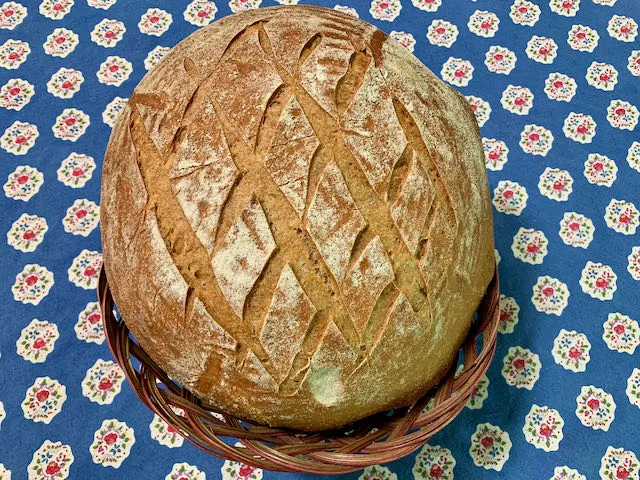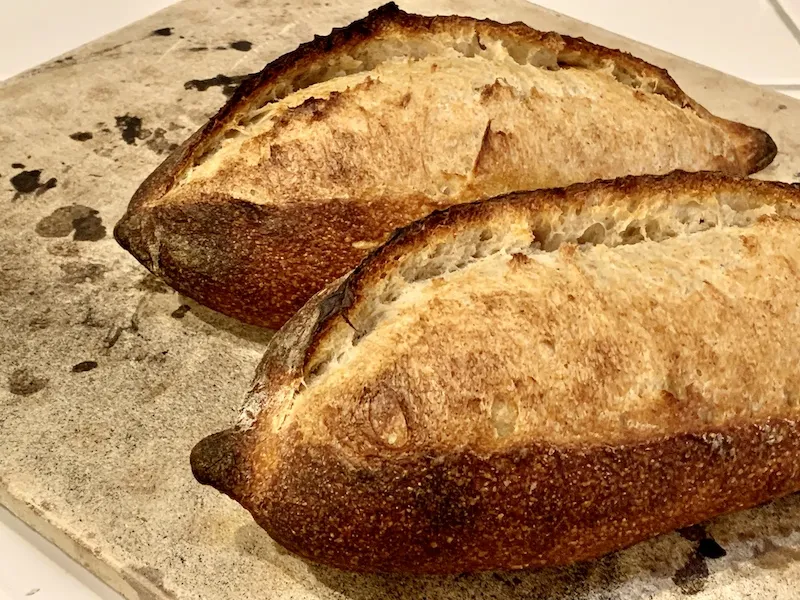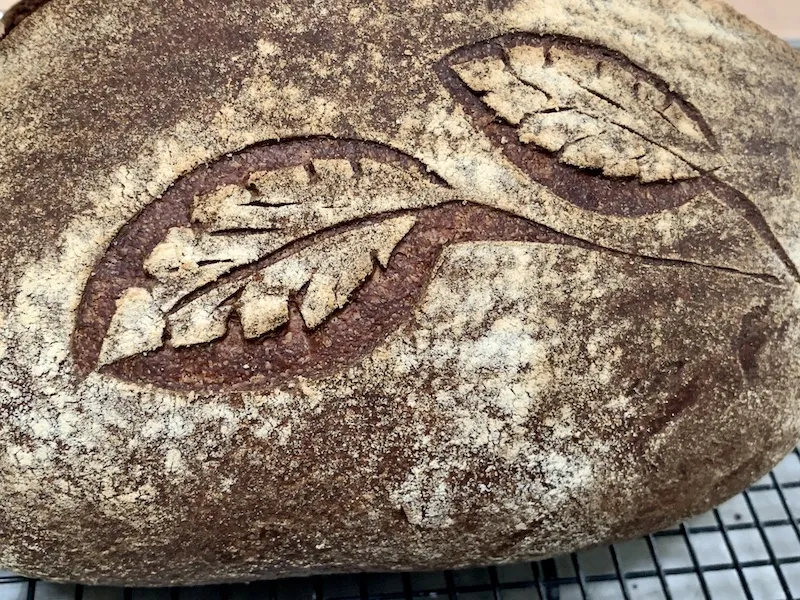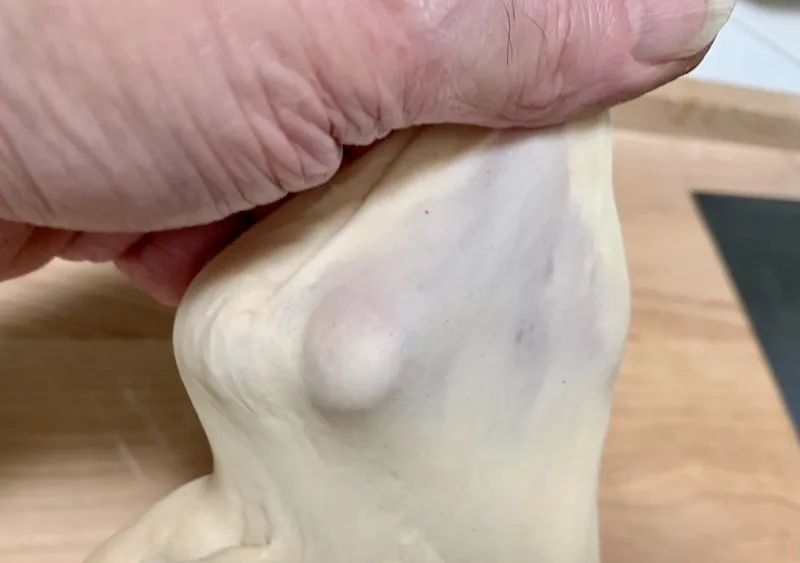Sourdough Bread with 31% Freshly-milled Whole Wheat Flour
Today's bake is loosely based on Ken Forkish's "Overnight Country Brown." I increased the levain and did the "overnight" in the fridge after dividing and shaping rather than in bulk at room temperature. Well, the hydration is higher too - 85.5 versus 78%. The result is a moderately sour, crusty loaf with a fairly open, deliciously moist and tender crumb. The flavor is more straight ahead wheaty than my favorite multigrain sourdough, but this is also a spectacularly delicious bread. I had some almost cooled with a light smear of butter, along with a bowl of split pea soup for lunch.
